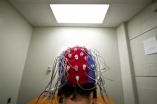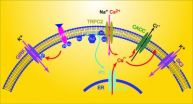Emotion detectives uncover new ways to fight-off youth anxiety and depression
UM researchers assess the efficacy and feasibility of a program designed to help children and parents learn about emotions and develop strategies for a happier life
2012-07-30
(Press-News.org) CORAL GABLES, FL (July 11, 2012)—Emotional problems in childhood are common. Approximately 8 to 22 percent of children suffer from anxiety, often combined with other conditions such as depression. However, most existing therapies are not designed to treat co-existing psychological problems and are therefore not very successful in helping children with complex emotional issues.
To develop a more effective treatment for co-occurring youth anxiety and depression, University of Miami (UM) psychologist Jill Ehrenreich-May and her collaborator Emily L. Bilek analyzed the efficacy and feasibility of a novel intervention created by the researchers, called Emotion Detectives Treatment Protocol (EDTP). Preliminary findings show a significant reduction in the severity of anxiety and depression after treatment, as reported by the children and their parents.
"We are very excited about the potential of EDTP," says Ehrenreich-May, associate professor of psychology in the College of Arts and Sciences at UM and principal investigator of the study. "Not only could the protocol better address the needs of youth with commonly co-occurring disorders and symptoms, it may also provide additional benefits to mental health professionals," she says. "EDTP offers a more unified approach to treatment which, we hope, will allow for an efficient and cost-effective treatment option for clinicians and clients alike."
Emotion Detectives Treatment Program is an adaptation of two treatment protocols developed for adults and adolescents, the Unified Protocols. The program implements age-appropriate techniques that deliver education about emotions and how to manage them, strategies for evaluating situations, problem solving skills, behavior activation (a technique to reduce depression) and parent training.
In the study, 22 children ages 7 to 12 with a principal diagnosis of an anxiety disorder and secondary issues of depression participated in a 15-session weekly group therapy of EDTP. Among participants who completed the protocol (18 out of 22), 14 no longer met criteria for an anxiety disorder at post-treatment. Additionally, among participants who were assigned a depressive disorder before treatment, (5 out of 22), only one participant continued to meet such criteria at post-treatment.
Unlike results from previous studies, the presence of depressive symptoms did not predict poorer treatment response. The results also show a high percentage of attendance. The findings imply that EDTP may offer a better treatment option for children experiencing anxiety and depression.
"Previous research has shown that depressive symptoms tend to weaken treatment response for anxiety disorders. We were hopeful that a broader, more generalized approach would better address this common co-occurrence," says Bilek, doctoral candidate in clinical psychology, at UM and co-author of the study. "We were not surprised to find that the EDTP had equivalent outcomes for individuals with and without elevated depressive symptoms, but we were certainly pleased to find that this protocol may address this important issue."
The study, titled "An Open Trial Investigation of a Transdiagnostic Group Treatment for Children With Anxiety and Depressive Symptoms," is published online ahead of print in the journal Behavior Therapy.
The next step is for the team to conduct a randomized controlled trial comparing the EDTP to another group treatment protocol for anxiety disorder.
###
The University of Miami's mission is to educate and nurture students, to create knowledge, and to provide service to our community and beyond. Committed to excellence and proud of the diversity of our University family, we strive to develop future leaders of our nation and the world. www.miami.edu
ELSE PRESS RELEASES FROM THIS DATE:
2012-07-30
CAMBRIDGE, Mass. -- Interactive proofs, which MIT researchers helped pioneer, have emerged as one of the major research topics in theoretical computer science. In the classic interactive proof, a questioner with limited computational power tries to extract reliable information from a computationally powerful but unreliable respondent. Interactive proofs are the basis of cryptographic systems now in wide use, but for computer scientists, they're just as important for the insight they provide into the complexity of computational problems.
Twenty years ago, researchers showed ...
2012-07-30
EAST LANSING, Mich. — For the human brain, learning a new task when rules change can be a surprisingly difficult process marred by repeated mistakes, according to a new study by Michigan State University psychology researchers.
Imagine traveling to Ireland and suddenly having to drive on the left side of the road. The brain, trained for right-side driving, becomes overburdened trying to suppress the old rules while simultaneously focusing on the new rules, said Hans Schroder, primary researcher on the study.
"There's so much conflict in your brain," said Schroder, "that ...
2012-07-30
(SALT LAKE CITY)—Alternating hemiplegia of childhood (AHC) is a rare disorder that usually begins in infancy, with intermittent episodes of paralysis and stiffness, first affecting one side of the body, then the other. Symptoms mysteriously appear and disappear, again and again, and affected children often experience dozens of episodes per week. As they get older, children fall progressively behind their peers in both intellectual abilities and motor skills, and more than half develop epilepsy. Unfortunately, medications that work for epilepsy have been unsuccessful in ...
2012-07-30
Kansas City, Missouri - The vomeronasal organ (VNO) is one of evolution's most direct enforcers. From its niche within the nose in most land-based vertebrates, it detects pheromones and triggers corresponding basic-instinct behaviors, from compulsive mating to male-on-male death matches. A new study from the Stowers Institute for Medical Research, published online in Nature Neuroscience on July 29, 2012, extends the scientific understanding of how pheromones activate the VNO, and has implications for sensory transduction experiments in other fields.
"We found two new ...
2012-07-30
Sandwiching individual graphene sheets between insulating layers in order to produce electrical devices with unique new properties, the method could open up a new dimension of physics research.
Writing in Nature Materials, the scientists show that a new side-view imaging technique can be used to visualize the individual atomic layers of graphene within the devices they have built. They found that the structures were almost perfect even when more than 10 different layers were used to build the stack.
This surprising result indicates that the latest techniques of isolating ...
2012-07-30
BOSTON, MA—A research team led by Xian Chang Li, MD, PhD, Brigham and Women's Hospital (BWH) Transplantation Research Center, has shed light on how a population of lymphocytes, called CD4+ T cells, mature into various subsets of adult T helper cells. In particular, the team uncovered that a particular cell surface molecule, known as OX40, is a powerful inducer of new T helper cells that make copious amounts of interleukin-9 (IL-9) (and therefore called TH9 cells) in vitro; such TH9 cells are responsible for ongoing inflammation in the airways in the lungs in vivo.
The ...
2012-07-30
BOSTON (July 29, 2012) – Researchers from the Massachusetts Eye and Ear Infirmary, The Children's Hospital of Philadelphia, Loyola University Chicago Health Sciences Division and their collaborators have isolated an elusive human gene that causes a common form of Leber congenital amaurosis (LCA), a relatively rare but devastating form of early-onset blindness. The new LCA gene is called NMNAT1. Finding the specific gene mutated in patients with LCA is the first step towards developing sight-saving gene therapy.
LCA is an inherited retinal degenerative disease characterized ...
2012-07-30
A team of British and Australian scientists has discovered an important method of how carbon is drawn down from the surface of the Southern Ocean to the deep waters beneath. The Southern Ocean is an important carbon sink in the world – around 40% of the annual global CO2 emissions absorbed by the world's oceans enter through this region.
Reporting this week in the journal Nature Geoscience, scientists from British Antarctic Survey (BAS) and Australia's national research agency, the Commonwealth Scientific and Industrial Research Organisation (CSIRO), reveal that rather ...
2012-07-30
DURHAM, N.C. – Alternating hemiplegia of childhood (AHC) is a very rare disorder that causes paralysis that freezes one side of the body and then the other in devastating bouts that arise at unpredictable intervals. Seizures, learning disabilities and difficulty walking are common among patients with this diagnosis.
Researchers at Duke University Medical Center have now discovered that mutations in one gene cause the disease in the majority of patients with a diagnosis of AHC, and because of the root problem they discovered, a treatment may become possible.
The study ...
2012-07-30
"We see landslides everywhere in the solar system," says Kelsi Singer, graduate student in earth and planetary sciences in Arts & Sciences at Washington University in St. Louis, "but Saturn's icy moon Iapetus has more giant landslides than any body other than Mars."
The reason, says William McKinnon, PhD, professor of earth and planetary sciences, is Iapetus' spectacular topography. "Not only is the moon out-of-round, but the giant impact basins are very deep, and there's this great mountain ridge that's 20 kilometers (12 miles) high, far higher than Mount Everest.
"So ...
LAST 30 PRESS RELEASES:
[Press-News.org] Emotion detectives uncover new ways to fight-off youth anxiety and depression
UM researchers assess the efficacy and feasibility of a program designed to help children and parents learn about emotions and develop strategies for a happier life


